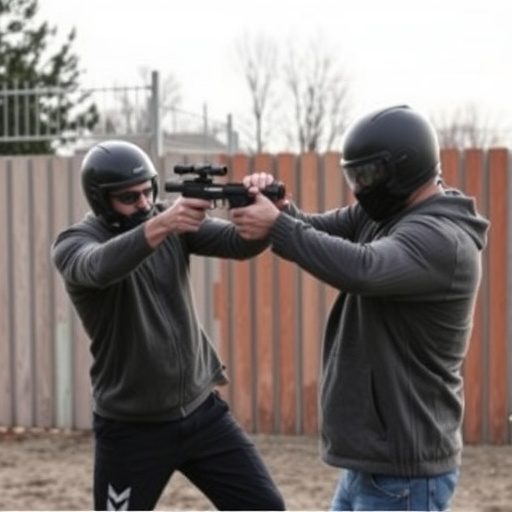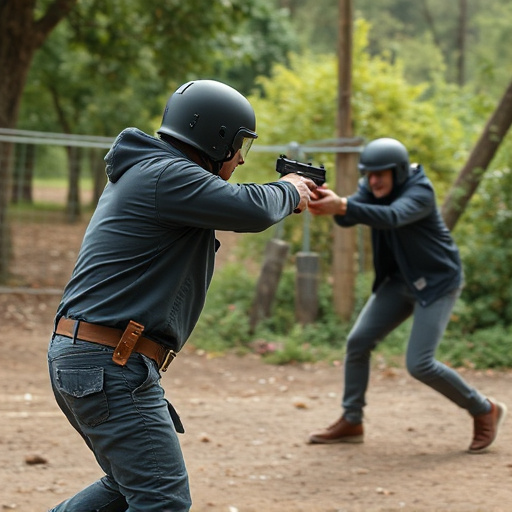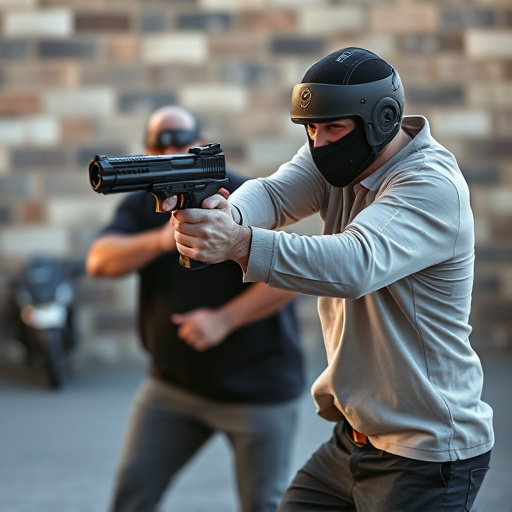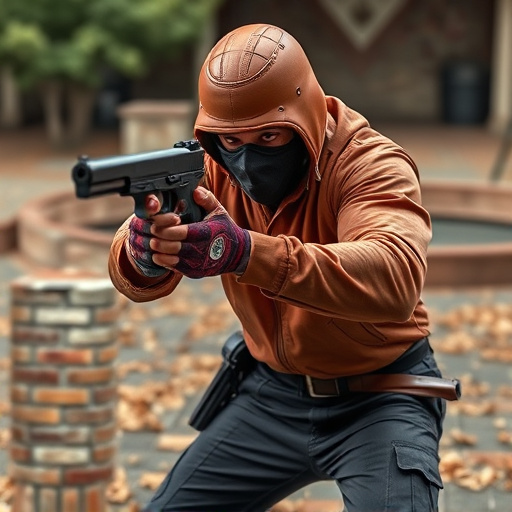Stun guns, with high voltage and range, offer personal protection but are susceptible to weather and barriers. Top 10 stun guns vary in features like charging speed, GPS tracking, and durability. Tasers, though regulated, temporarily disable from farther distances. Users must consider power, legality, and local regulations when choosing between stun guns and Tasers for personal safety.
In today’s world, personal safety is paramount. Among the tools gaining popularity for self-defense are Tasers and stun guns, both designed to incapacitate assailants temporarily. Understanding their distinct mechanisms, applications, and legal considerations is crucial when choosing the right option for personal protection. This article delves into the intricacies of these devices, highlighting the top 10 stun guns for personal safety, based on power, range, and features that make them effective tools in the hands of those seeking peace of mind.
- Understanding Tasers: How They Work and Their Applications
- Stun Guns: Mechanisms, Advantages, and Disadvantages
- Top 5 Stun Gun Features for Personal Safety
- Comparing Power, Range, and Legal Considerations
Understanding Tasers: How They Work and Their Applications

Tasers, officially known as Electronic Control Devices (ECDs), are non-lethal weapons designed to temporarily incapacitate a target through muscle confusion and pain. They fire two small probes connected to wires, delivering an electric current that disrupts the nervous system. This results in a temporary loss of muscular control, allowing the user or bystanders to gain control over the situation.
Tasers have diverse applications beyond law enforcement, including personal protection, as highlighted by various Top 10 stun guns for personal protection lists. They are particularly useful in close-quarters encounters where traditional weapons might not be feasible or desirable. Whether for self-defense against an assailant or de-escalating a potentially violent situation, tasers offer a non-lethal means of ensuring safety and security.
Stun Guns: Mechanisms, Advantages, and Disadvantages

Stun guns operate by delivering a powerful electric shock to immobilize a target, temporarily disrupting their nervous system. This is achieved through a mechanism that fires two thin probes connected to high-voltage, low-amperage electrical currents. The current disrupts muscle control, causing the victim to experience intense pain, disorientation, and loss of balance.
While stun guns offer several advantages for personal protection, they also come with drawbacks. Top 10 stun guns for personal protection often prioritize ease of use, power output, and range. However, their effectiveness can be hindered by weather conditions, physical barriers, or if the target is wearing protective gear. Moreover, unlike tasers that fire probes independently, stun guns require direct contact or a close proximity to the target, which can pose risks to the user in certain situations.
Top 5 Stun Gun Features for Personal Safety

When considering a stun gun for personal safety, look for specific features that enhance its effectiveness and convenience. Firstly, high voltage is key; higher voltage ensures stronger jolts that can disable an attacker, with 12,000 volts or more being ideal for most self-defense scenarios. Secondly, fast charging capability lets you stay prepared without constant battery replacements. Some models even offer solar charging options, increasing their sustainability.
Thirdly, long range stun guns give users a tactical advantage, allowing them to disable attackers from a safe distance (up to 30 feet). Fourthly, multi-functionality is beneficial; many modern stun guns include additional features like an alarm, flashlights, or even GPS tracking for enhanced personal safety. Lastly, consider durability and weather resistance, especially if you plan to carry it regularly. In the realm of top 10 stun guns for personal protection, these features are essential differentiators that contribute to your peace of mind.
Comparing Power, Range, and Legal Considerations

When comparing a Taser and a stun gun, both designed for personal protection, understanding their power, range, and legal implications is key. In terms of power, Tasers are known for their ability to temporarily incapacitate targets through muscle spasms, often rendering them defenseless for several minutes. Stun guns, on the other hand, use electrical current to override the target’s motor functions, causing a sharp jolt of pain and temporary paralysis.
In terms of range, stun guns generally have a shorter effective distance compared to Tasers. Most stun guns are designed for close-quarters combat, with their effects becoming less reliable beyond 20 feet. In contrast, Tasers can deliver their shock from a safer distance, sometimes up to 35 feet away, making them appealing for self-defense scenarios that require more space between the user and potential threat. Legal considerations also differ significantly; while stun guns are generally considered less restrictive in many jurisdictions, Tasers often fall under tighter regulations due to their potential for greater force. This is particularly important when considering the Top 10 stun guns for personal protection, as users must be aware of local laws to ensure they remain compliant.
When it comes to personal safety, both Tasers and stun guns offer effective non-lethal force options. Tasers, with their unique electrical muscle, provide a powerful incapacitant while stun guns deliver a jarring shock. Understanding the nuances between these two tools is key when choosing the best option for your specific needs. While Tasers are generally more versatile in application, stun guns often offer higher power and range within legal constraints. Among the top 10 stun guns for personal protection, features like high voltage, extended reach, and ergonomic design stand out. Ultimately, the choice depends on individual preferences, intended use cases, and local regulations, ensuring you have the right tool to protect yourself effectively.
